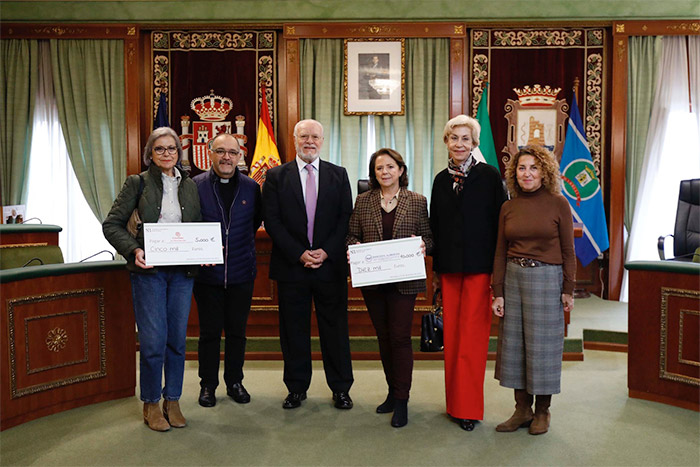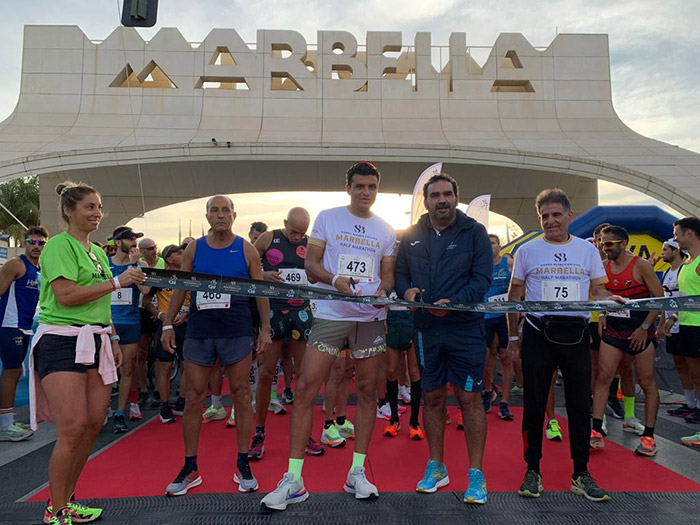Pedro Rodriguez, founder of Sierra Blanca Estates, builds sanctuaries for the super-rich. But his ambitions for the Costa del Sol stretch far beyond catering only to its wealthiest residents.
When Pedro Rodriguez’s newest schemes complete in the next few years, he – as the founder of the property development company Sierra Blanca Estates – will have built the most upmarket new neighborhood on the Costa del Sol.
The new super-prime residential enclave near the Golden Mile is already setting price records for its branded residences designed in collaboration with Fendi Casa and Karl Lagerfeld. The new Sports Center at Epic Marbella, which includes a professional-standard indoor basketball court and golf simulator, is tangible proof of the level of luxury that buyers will enjoy.
But Rodriguez, 76, who was the original mastermind behind Marbella’s wealthy Sierra Blanca neighborhood 40 years ago, feels the need to leave his mark in other ways, and that’s by having a lasting social and economic impact on the areas that his projects inhabit.
“I believe it’s the responsibility of every company to help the communities they live and work in. We feel this city, Marbella, has become part of our family,” says Rodriguez who, earlier this year, launched the Sierra Blanca Estates Foundation to promote social responsibility within his company and fund schemes for less advantaged sectors of society.
That includes supporting the charity Caritas Marbella, which provides food to those in need. “Their annual dinner raises a significant amount of funds to help the less fortunate, whether they are socially marginalized youth or other vulnerable groups in society”, he comments. “I would like to sit down with other groups and organizations in Marbella and find out other ways we can help.”

The concepts of ESG (Environmental, Social and Governance) are now familiar to investors – especially the ‘E’ aspect as companies and countries push ahead to reach net zero. But Rodriguez is among those who, behind the scenes, is working hard on the ‘S’ pillar.
“Social value in the built environment is about creating lasting positive impact throughout the real estate life cycle for every stakeholder interacting with and within spaces,” according to the global property advisors JLL, who identify seven pillars of social value in real estate, including health and wellbeing, community engagement, and equity and inclusion.
In their latest Wealth Report 2023, Knight Frank estate agency find that 27% of ultra-high net worth investors consider social impact when evaluating the value of property investments. Liam Bailey, Knight Frank’s head of global research, comments that “real estate development projects inherently possess an opportunity to significantly impact the people within each and every community and their quality of life”.
It’s a philosophy that chimes loudly with Rodriguez, whose Foundation also plans to provide educational scholarships for children and supports a near future, as major cultural and sporting events, including Marbella’s Starlite festival, its half marathon and future ultra-sports events that will attract tens of millions of Euros in revenue for the city.

“Maybe I’ve adopted an American attitude from having lived in New York in the past, but it’s a very American thing to become successful and then to feel proud of helping people less fortunate that you in your community. Even if it seems a little selfish, when you help someone, you feel better,” he says.
Ultra-high-net worth buyers, in addition to being interested in the value of their own investment, are also aware of the social impact of their purchase and how companies such as Sierra Blanca are able to convey it to all social strata. “If you improve the surrounding area, you increase the value of their properties,” says Rodriguez. “If you build an exceptional project, people will follow – and these are entrepreneurs and businesspeople who keep a lot of other people in work. There are hundreds of lawyers, accountants and architects who own their careers to high-end property buyers. These are people buy a nice property and they employ drivers, cleaners and gardeners, but also revitalize the commercial and productive fabric of the city through consumption in stores, restaurants, clinics, etc. For many years, I’ve been saying that high-end real estate buyers are responsible for maintaining the economic activity of the surrounding area for 365 days a year.”

Their role in sustaining a local community was particularly marked during the pandemic, Rodriguez adds. “Buyers create residential tourism, which is crucial to seasonal cities like Marbella. They keep things ticking over at times of crisis.”
There is also the wider positive impact that comes with the place-making ambitions of new luxury residential or mixed-use schemes, as seen across the world. There are huge schemes that create entire new neighborhoods, such as King’s Cross and Battersea Power Station in London. And there are stand-alone buildings that become the lynchpin of wider regeneration, such as Barcelona’s W hotel, which kickstarted the transformation of the city’s beachfront and old port into a luxury super-yacht marina, or Madrid’s Four Seasons hotel and residences, which have breathed new life into a neglected part of the city center.
In Málaga, Sierra Blanca Tower, Sierra Blanca Estates’ high-rise scheme of luxury beachfront apartments, located in the Málaga Towers project, has already triggered a ripple effect of regeneration across the city, says Rodriguez. “It has created new businesses and inspired other luxury towers to be built,” he says. He also cites the forthcoming sports club that Rafael Nadal is opening near Sierra Blanca Tower. “That side of the city is becoming a major sports hub,” he says. “Nadal’s choice of Malaga sends out a powerful message globally. It’s a seal of approval. We are all committed to its future.”
There were doubts, Rodriguez adds, that Sierra Blanca Tower could work. “When we decided to build it, that area of western Malaga had been degraded for years. It was depressed. Many people were against doing anything better quality in Malaga as they thought no one would pay a high enough price,” he says. “I told the mayor, Mr. Francisco de la Torre, that by building our tower we would be forerunners in the regeneration and revaluation of the western sector of the city thanks to the design, quality and positive impact that it would generate as a project”.However, Rodriguez does not only focus, once again, on his potential public, but moves his transformative vision much further, “I am a faithful defender of the idea that Málaga has to develop subsidized housing and democratize access to it with low rents and prices; this commitment must exist at the same time as other agents like us focus on other types of projects that accelerate, through their own investment and interest, the overall transformation of the city. We are part of a whole that meets the same objective, to improve the appearance of the city and impact the quality of life of all citizens.””
As Sarah Forster, CEO of The Good Economy, an impact advisory firm that specializes in the social value of sustainable development, comments, well-designed, good-quality new developments “support happier and heal their lives for everyone”.
Rodriguez couldn’t agree more. “It’s our duty to ensure that everyone who lives in Marbella is able to have quality of life. Our purpose isn’t just to generate wealth. We want to have a positive impact on society, which means redistributing some of that wealth to the sectors of society who need it most.”





